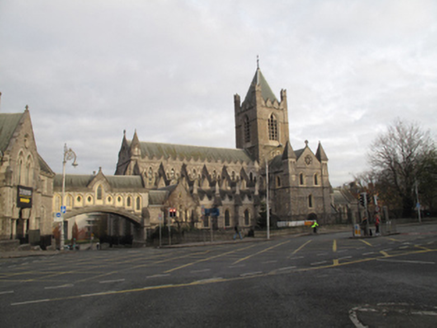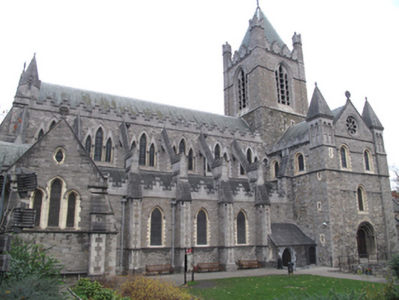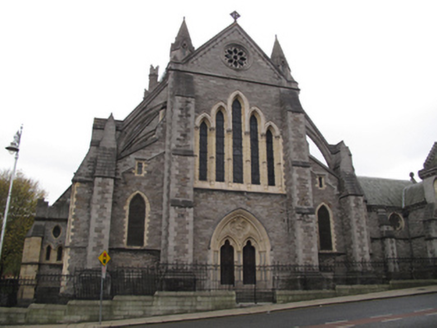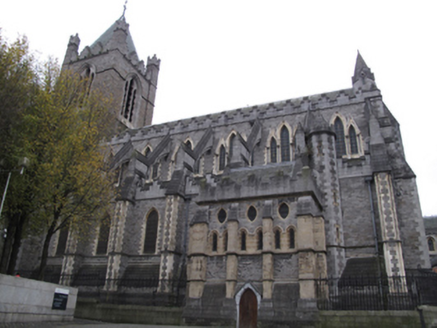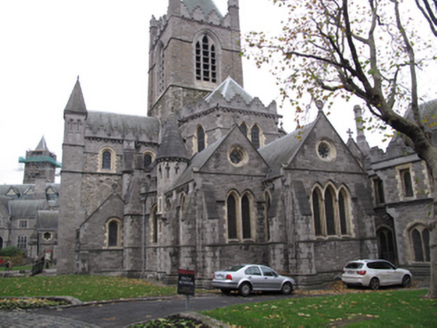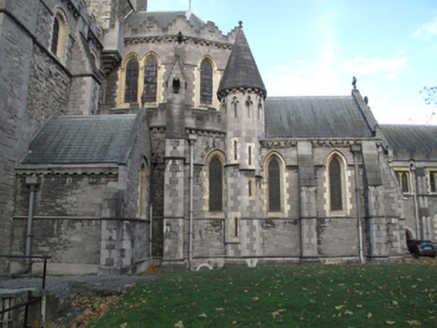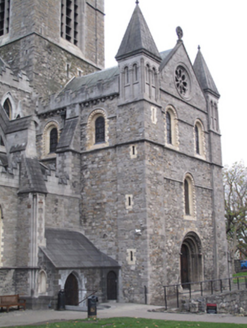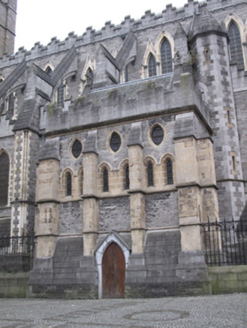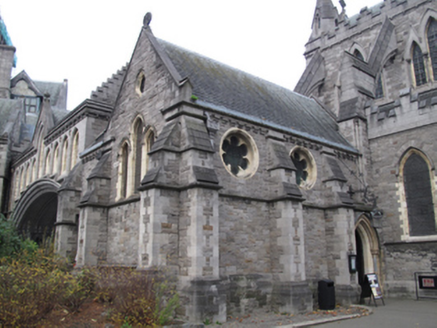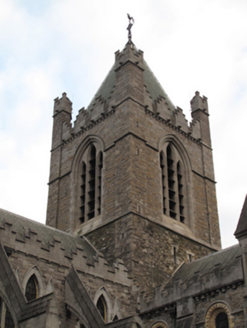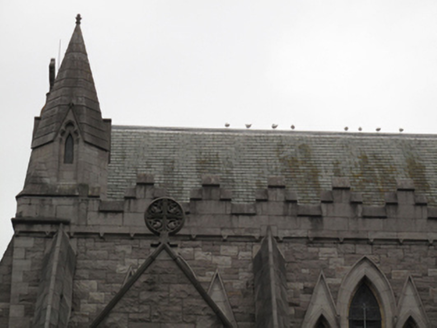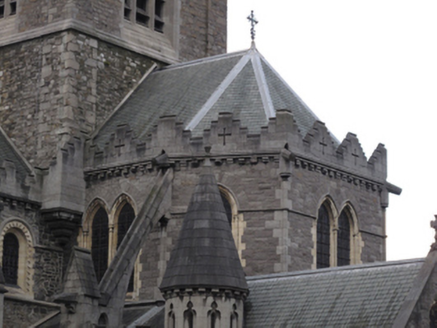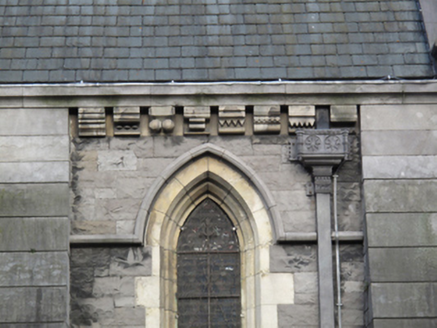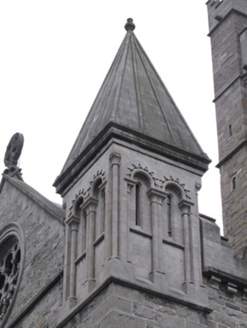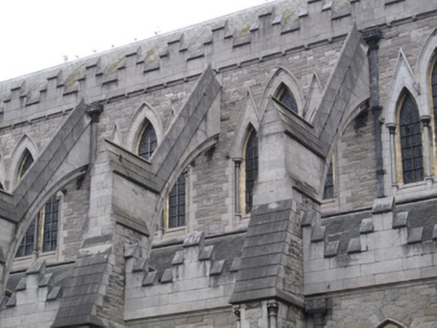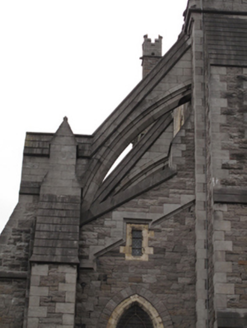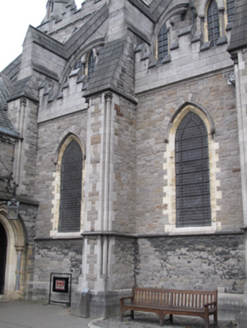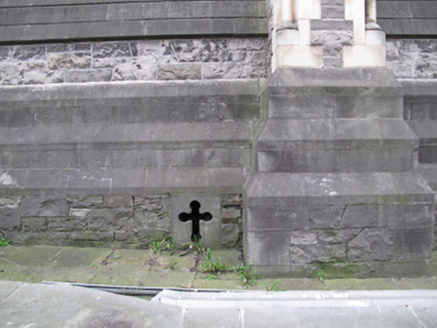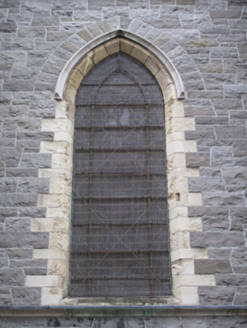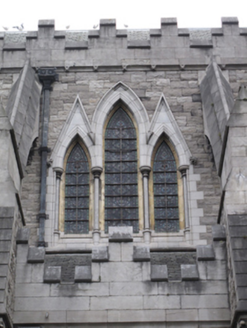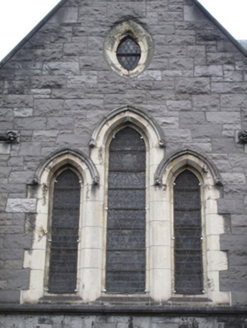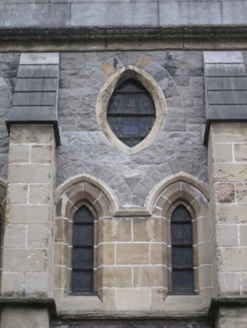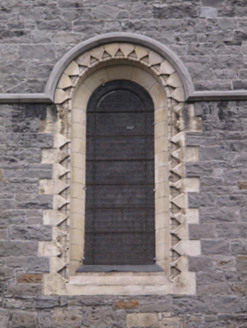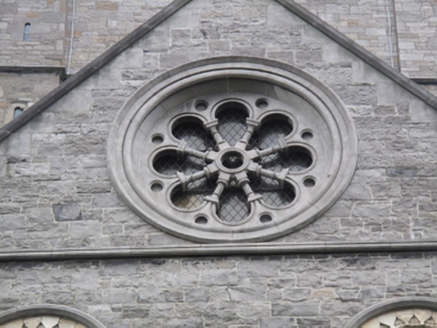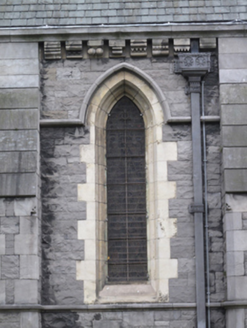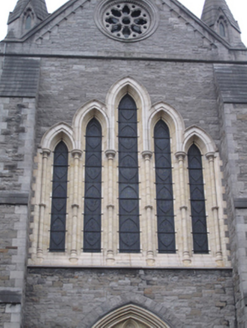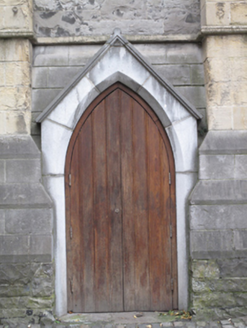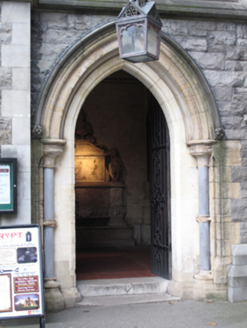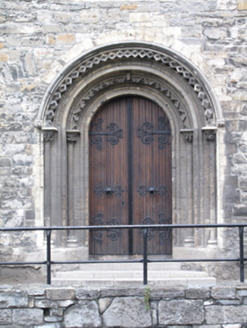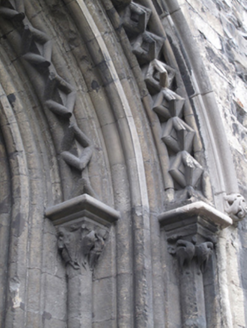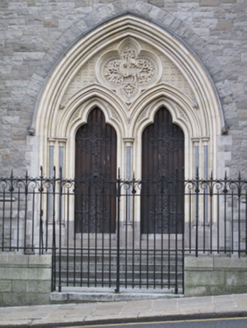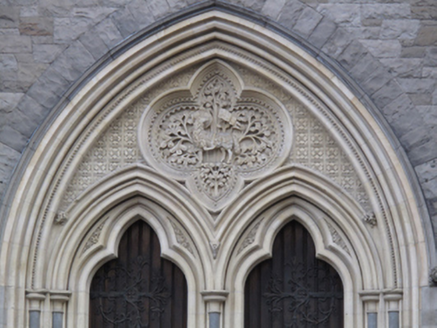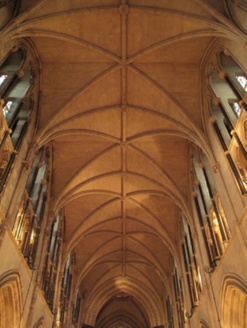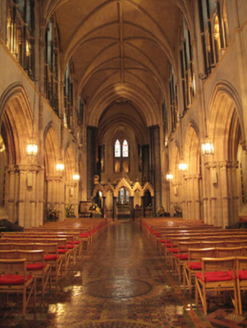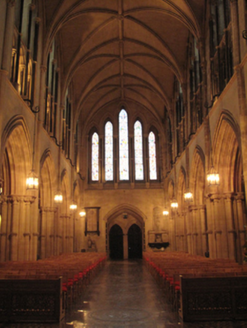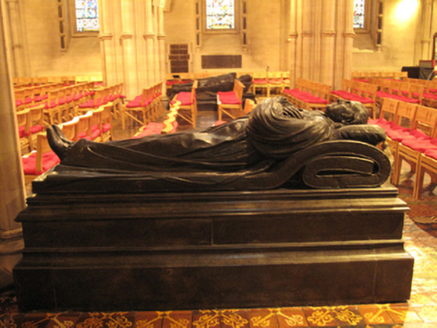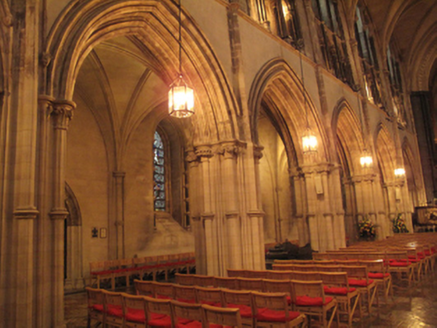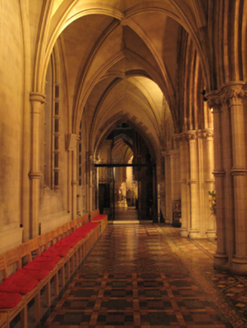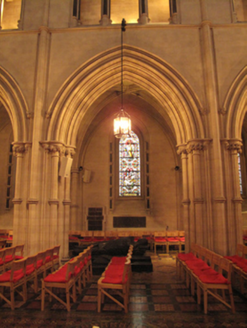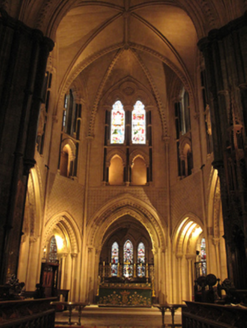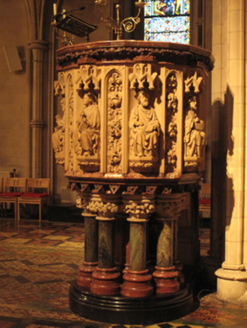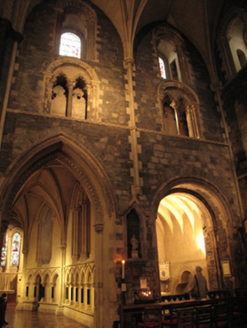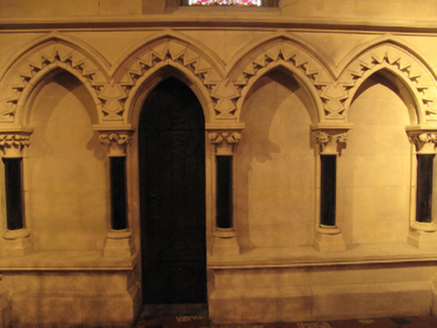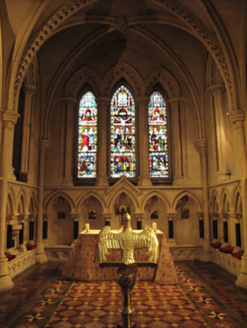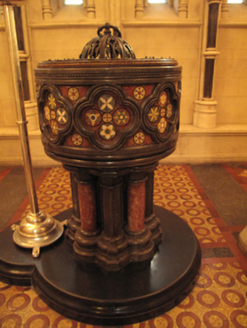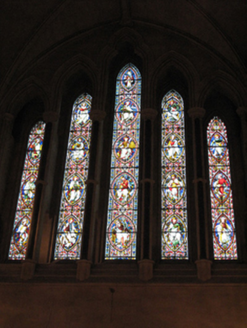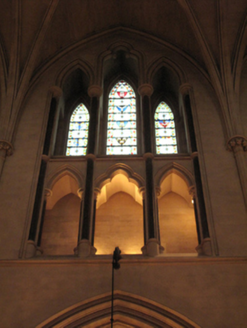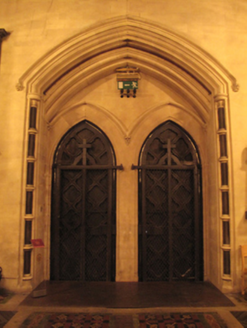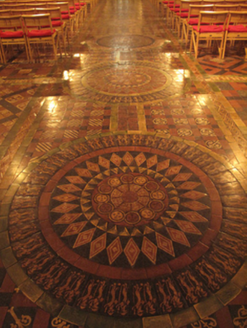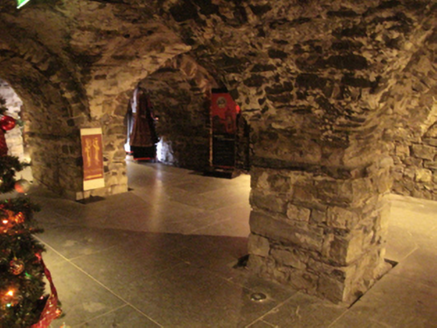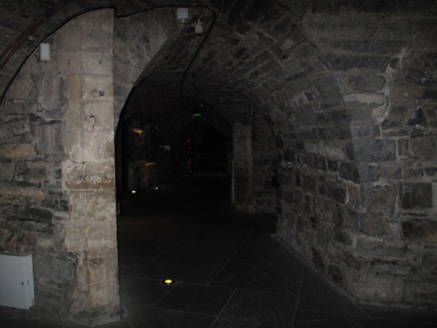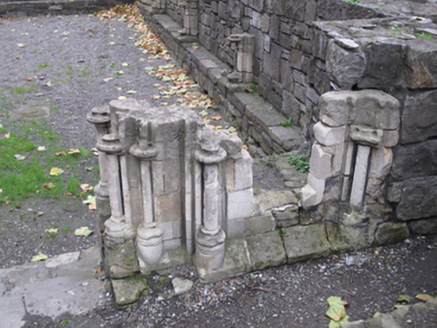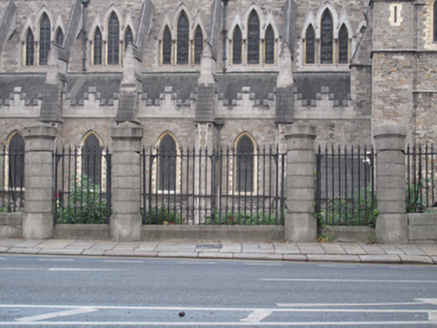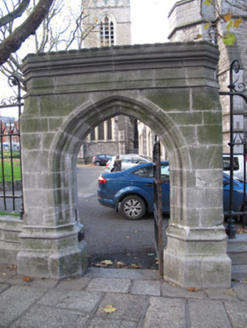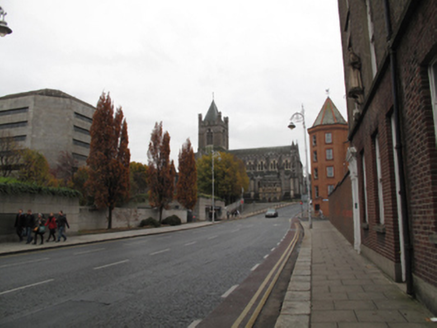Survey Data
Reg No
50080532
Rating
National
Categories of Special Interest
Archaeological, Architectural, Artistic, Historical, Social, Technical
Original Use
Cathedral
In Use As
Cathedral
Date
1160 - 1880
Coordinates
315196, 233945
Date Recorded
28/10/2013
Date Updated
--/--/--
Description
Attached cruciform-plan Church of Ireland cathedral, built c.1170, rebuilt c.1875, comprising six-bay nave, gable-fronted transepts to north and south, apsidal chancel to west end. Square-profile crossing tower, lean-to side aisles to nave with flying buttresses, ambulatory to chancel with polygonal-plan towers. Lean-to baptistery to north elevation, gabled porch to south elevation. Multiple chapels to east end. Pitched slate roofs, carved limestone coping and cross finials, carved limestone eaves courses with corbel tables. Octagonal towers flanking gable to west of nave, square-profile carved limestone towers flanking gables to transepts, pyramidal roofs, paired blind arcades to each elevation of tower, carved surrounds having chevron motif to arch and colonnettes, lancet openings. Pyramidal slate roof to crossing tower, crenellated corner piers. Carved limestone stepped crenellated parapets, cruciform openings to chancel, corbel tables. Decorative cast-iron rainwater goods. Snecked limestone to walls, plinth course with carved limestone coping, snecked limestone buttresses, having integral collonettes to quoins, Caen stone to north, cut limestone to south elevation, surmounted by cut limestone flying buttresses, some carved limestone guttering. Carved limestone string courses. Pilaster buttresses to west elevation, cut limestone quoins. Caen stone buttresses to baptistery. Pointed arch lancet windows to side aisles and chapels to east, carved limestone hood mouldings, chamfered Caen stone surrounds, stained glass windows. Paired lancet windows to east of chancel and to flanking chapels to east, triple arrangement of lancet windows to centre chapel to east. Tripartite arrangements of pointed arch lancet clerestory windows to nave, carved limestone surrounds incorporating colonnettes to mullions, Caen stone surrounds, stained glass windows. Triple arrangement of pointed arch lancet windows to south of porch, Caen stone surrounds and hood mouldings, stained glass windows, ovoid oculus over, Caen stone surround, leaded window. Round-headed window openings to transepts, decorative Caen stone surrounds having chevron motifs, stained glass windows. Five-light lancet window to west of nave, carved Caen stone surround with hood mouldings and colonnettes to mullions, stained glass windows. Oculi to apices of gables, multifoil openings, leaded windows. Paired pointed arch lancet windows to bapistry, carved Caen stone surrounds and hood mouldings, ovoid oculus over, leaded windows. Pointed arch door opening to porch to south, carved Caen stone surround on marble colonnettes, carved limestone hood moulding terminating in foliate stops, double-leaf timber battened door having wrought-iron fittings. Round-headed door opening to south elevation of south transept, carved stepped Caen stone surround with chevron motifs and decorative capitals, double-leaf timber battened door having wrought-iron fittings. Paired trefoil door openings to west elevation set within pointed arch surround, carved Caen stone surround with roll mouldings, decorative tympanum with quatrefoil containing Lamb of God, foliate motif to spandrels. Timber battened doors, decorative wrought-iron fittings. Limestone steps to doors. Pointed arch door opening set within gabled cut limestone opening, double-leaf timber battened door, to north elevation of baptistery. Pointed arch openings to each elevation of upper stage of tower, tripartite arrangements of lancet openings, louvered vents. Rectangular-profile sunken remains of former Bath stone Chapter House to south of transept, built c.1250. Carved Caen stone arcade of pointed arches supported on decorative piers flanking nave to interior, triforum and clerestory windows, with marble colonnettes to mullions, to upper wall. Groin-vaulted ceilings to nave and aisles, decorative stone ribs supported on Caen stone columns placed between bays. Carved foliate detailing, surmounted by Greek key string course, to walls of chancel. Pointed arch openings from chancel to ambulatory and chapels to rear, decorative surrounds having chevron motifs. Blind arcade of pointed arches to ambulatory, chevron motif to arches, supported on marble shafts. Rubble calp limestone walls to south transept, Caen stone detailing. Decorative tiles to floor. Figurative carved stone tombs, of former Dean of Christ Church and Strongbow, flanking nave. Stained glass windows. Choir screen comprising marble piers supporting decorative pointed arcade, cross finial to centre opening. Wrought-iron railings between columns and to east of side aisles. Lady Chapel to east of choir, flanked by side chapels. Chevron motifs to ribs to ceiling and over pointed arch window openings, blind arcade to lower wall. Baptistery to north of nave, marble colonnettes and rib vaulting. Decorative tiled floor. Marble baptismal font with quatrefoil motifs. Medieval crypt under floor, groin-vaulted ceiling supported on rubble calp limestone piers. Cast-iron railings set on granite plinth wall to boundary to south and west, octagonal-profile cut granite piers to south. Pedestrian entrance to south, cast-iron gate set within railings. Decorative shamrock motifs and carved limestone plinth wall to railings to east, square-profile carved limestone piers. Carved limestone entrance to east comprising pointed arch opening with carved architrave surround and wrought-iron gate.
Appraisal
This elaborately detailed large-scale cathedral is prominently sited, overlooking the site of the medieval city of Dublin. Due to its form, detailing and magnitude, in addition to its historic and ecclesiastical importance, it is a structure of considerable significance. The original timber church on the site was founded in 1030 by the Bishop of Dublin and Sitriuc, the Norse King of Dublin. The present building, which was constructed under Archbishop Laurence O'Toole and Richard de Clare (Strongbow), in 1172. The cathedral was remodelled in the 1830s to designs by Matthew Price, having become somewhat dilapidated. This work proved ineffective, and a more complete reconstruction was undertaken c.1870 by George Edmund Street. The work was financed by distiller Henry Roe. A Romanesque doorway to the south transept, which pre-dates Street's intervention, although it has been moved from the north transept, provides an interesting focal point, with its impressive carvings of chevrons and patterns. An aesthetically-pleasing focal point on the south elevation, it is of archaeological interest due to its early date. The crypt underneath the building dates from 1188, a rare surviving example of a medieval crypt of this size. Expert stone masonry is exhibited in the various treatments of limestone and Caen stone, while the furnishings and ornamentation to the interior attest to highly skilled artisanship and attention to detail. The cathedral is particularly noteworthy for the quality of the interior, which incorporates stonework of artistic importance, together with groin vaulted ceilings which are of technical interest. The combination of flying buttresses, rib vaulting, and pointed arches creates an iconic Gothic Revival interior. Some medieval fabric has been retained, lending archaeological value to this structure. The cathedral makes a valuable contribution to the ecclesiastical and architectural heritage of Dublin and the country as a whole, and is a significant landmark in the locality.
